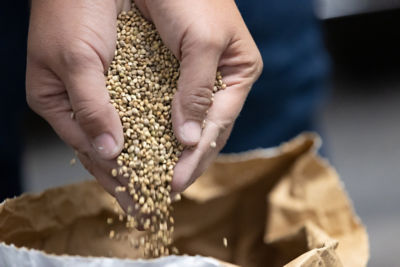Causal Agent
Pepper mottle virus (PepMoV)
Vector
Many species of aphids
Distribution
Southern United States, California, Mexico and Central America
Symptoms
Symptoms vary depending on the pepper variety infected, isolate of the virus present, age of plants when infected and environmental conditions. Affected field plants may develop a systemic mottle, distortion, and may be stunted. Infected greenhouse plants first develop vein-clearing followed by chlorotic mottle in newer leaves. Fruit may be distorted, mottled and small. Field plants often are infected with more than one virus. Multiple infections usually result in symptoms different from those caused by PepMoV alone and may appear more severe.
 Typical mottle symptoms in leaves.
Typical mottle symptoms in leaves.
 Deformed and mottled fruit.
Deformed and mottled fruit.
Conditions for Development
Like TEV, PVY and CMV, PepMoV can be transmitted by many species of aphids. PepMoV is transmitted on the mouthparts of aphids in a non-persistent manner. Weeds, such as Datura, and other solanaceous plants can harbor the virus and vector. Aphids may spread infection within a crop, or the virus may be transmitted mechanically through cultural practices such as staking, pruning or handling of infected plants.
Control
Remove crop residues and weeds that serve as a reservoir for both virus and vector. Use reflective mulches to deter aphids, and combine the use of stylet oils and insecticide sprays to reduce losses in young plants. Controlling the aphid vector population with chemical treatment is very difficult and generally provides limited control. In mature plants, it is difficult to achieve complete insecticide coverage of leaves to effectively eradicate all aphids. Resistant varieties are available in both hot and sweet peppers. However, resistance in available commercial varieties may not be effective against all isolates of PepMoV found




